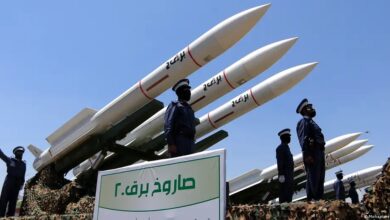The UK military could have “drone swarm” units by the middle of next year to perform tasks including suicide missions inside enemy lines and overwhelming adversary air defenses, Ian Williams-Wynn, Managing Director of drone manufacturer Blue Bear, revealed to the Telegraph.
The UK Ministry of Defense (MoD) has invested 4 million pounds ($5.3 million) in the Bedfordshire drone manufacturer for the project, William-Wynn told the paper.
The company has matched the MoD’s funding and the UK military could now get a battery of 20 network-enabled drones for around 5 million pounds ($6.6 million) in six months, he explained.
The concept of “swarm drones” includes the deployment of multiple units of small unmanned aerial systems (UAS) to overwhelm enemy air defenses, conduct cyber-attacks, and provide live images to control centers located thousands of miles away from the operational area.
Former Defense Secretary, Gavin Williamson, announced in February last year that the “drone swarm” units would be deployed in the armed forces by the end of 2019.
Pandemic Delayed Project
The Royal Air Force’s (RAF) 216 squadron based at RAF Waddington in Lincolnshire was reportedly reactivated in April with the task of testing future “drone swarm” capability.
The task, however, reportedly got overshadowed by the MoD’s changed priorities in the light of the pandemic.
The squadron is now working with the RAF’s Rapid Capabilities Office to bring experimental concepts into military service as quickly as possible.
Fighter Jet Mission Assistance
The primary task of the swarm capability is to confuse enemy air defenses and infrastructure while conventional aircraft like the F-35 or Eurofighter Typhoon safely carry out strikes.
The swarm drone concept is catching on with militaries around the world as expendable mission platforms which can be deployed in much larger numbers because of their comparatively low cost.
That’s why the UK, despite having an array of drones such as the Reaper and the upcoming Protector, is going ahead with the swarm technology.
Williams-Wynn remarked that there is resilience and flexibility in having a large fleet of cheaper drones with surveillance, electronic warfare, and other capabilities. “The platform is irrelevant. It’s a digital backbone and a nervous system to enable a mix of airborne, land, and maritime assets.”











